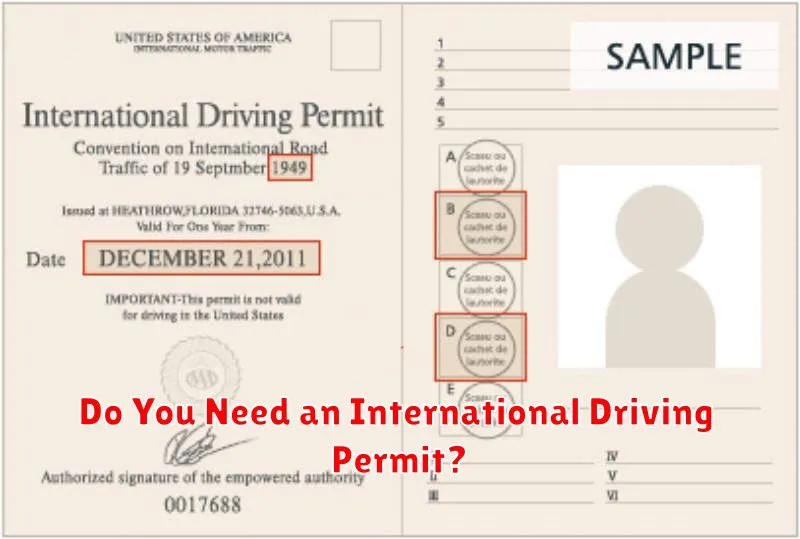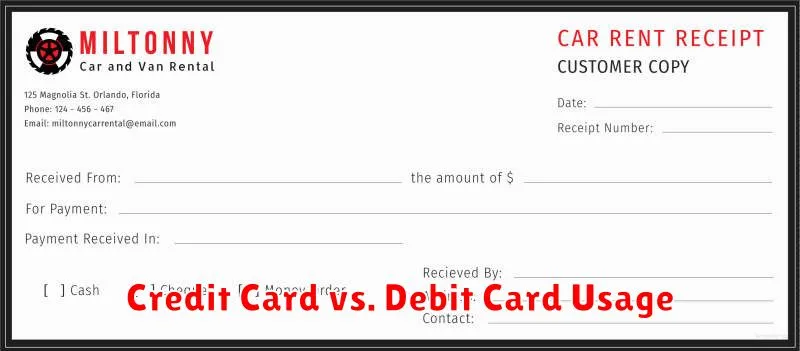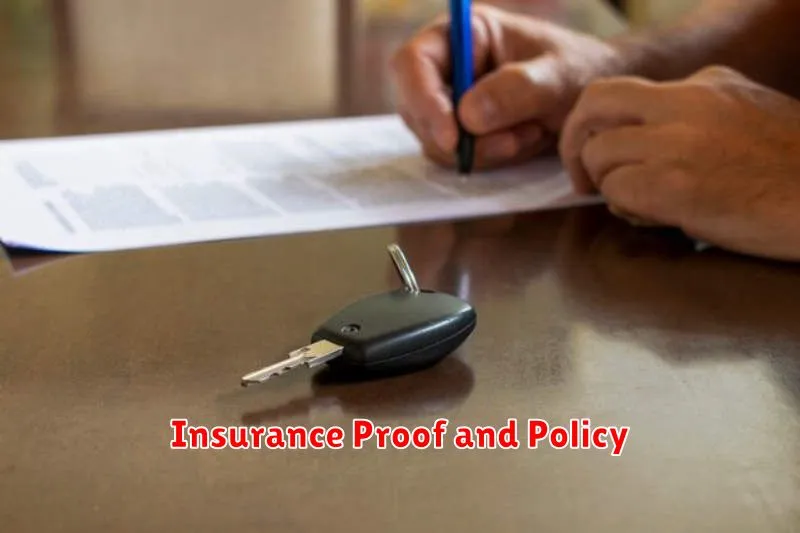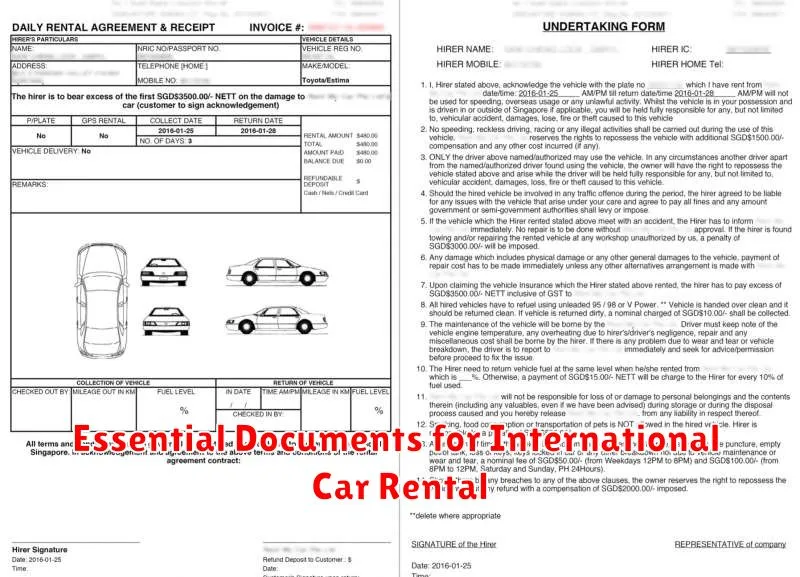Planning an international trip and considering renting a car? Renting a car abroad offers incredible freedom to explore at your own pace, but navigating the process requires specific documentation. Understanding the essential documents for international car rental is crucial for a smooth and stress-free experience. This article will outline the key documents you’ll need to secure your vehicle and embark on your journey without any hiccups. From your driver’s license and International Driving Permit (IDP) to your passport and credit card, we’ll cover everything you need to know to ensure a hassle-free international car rental experience.
Securing the correct documentation beforehand can save you valuable time and potential complications upon arrival. This comprehensive guide will detail the essential documents for international car rental, including specific requirements that may vary depending on your destination country and the rental company’s policies. We will also address common questions regarding driver’s license validity, the necessity of an International Driving Permit (IDP), acceptable forms of credit cards, and the importance of having your passport readily available. By being prepared and having all necessary documentation in order, you can focus on enjoying your international adventure.
Valid Driver’s License Requirements
A valid driver’s license is absolutely essential for renting a car internationally. Ensure your license is current and not expired.
Understanding International Driving Permits (IDP)
While your home country’s license might be sufficient in some countries, an International Driving Permit (IDP) is often highly recommended, and sometimes mandatory. It serves as an official translation of your driver’s license and can smooth the rental process. Check the specific requirements of your destination country before you travel.
License Validity Period
Many rental agencies require your driver’s license to be valid for a minimum period beyond your rental dates. This period can vary, so it’s crucial to confirm this with the rental company directly.
Do You Need an International Driving Permit?

An International Driving Permit (IDP) is a document that translates your valid driver’s license into multiple languages. It’s not a standalone license and you must carry your original license with it at all times.
Whether you need an IDP depends on your destination country and your current driver’s license. Some countries require an IDP for foreign drivers, while others may simply recommend it. Renting a car often adds another layer of complexity, as some rental agencies may have their own policies regarding IDPs, regardless of local laws. It’s crucial to research the specific requirements of both the country you’re visiting and the rental company you plan to use.
To avoid potential problems, it’s often recommended to obtain an IDP if you plan on driving abroad. They are relatively inexpensive and easy to acquire. Check with your local automobile association for application procedures.
Credit Card vs. Debit Card Usage

When renting a car internationally, understanding the differences between credit and debit card usage is crucial.
Credit cards are generally the preferred method of payment. Rental companies often place a hold (authorization) on a significant amount of funds to cover potential damages or incidental charges. This hold is typically released upon the car’s safe return. Credit cards offer better fraud protection and often include rental car insurance benefits.
Debit cards are sometimes accepted, but often with stricter requirements. The hold placed on a debit card directly impacts your available funds, potentially causing issues with other transactions. Some rental agencies may decline debit cards altogether, especially for higher-value vehicles or international rentals. It’s essential to confirm debit card acceptance and hold policies with the specific rental company beforehand.
Be prepared to present your driver’s license and passport along with your chosen payment method.
Passport and Identification
A valid passport is the most crucial document for international car rentals. Ensure your passport’s expiry date extends beyond your intended rental period. Most car rental companies require at least six months of validity remaining.
In addition to your passport, you’ll likely need a valid driver’s license. An International Driving Permit (IDP) is often highly recommended, even if not explicitly required. It serves as an official translation of your driver’s license and can facilitate smoother interactions with local authorities.
Some countries may also require additional forms of identification. Check the specific requirements of your destination country before your trip to ensure a hassle-free rental experience. Bringing a secondary form of photo identification, such as a national identity card, can be a wise precaution.
Insurance Proof and Policy

Before heading overseas, it’s crucial to understand your existing car insurance coverage and how it applies to international rentals. Contact your insurance provider to confirm whether your policy extends to rental vehicles abroad and the extent of that coverage. Some providers offer supplemental insurance for international travel, which may be a worthwhile investment.
Obtain a physical or digital copy of your insurance policy and any relevant documentation related to international coverage. This proof of insurance can be valuable if you are involved in an accident or need to make a claim. Keep this documentation readily accessible throughout your trip.
Credit card companies often provide rental car insurance coverage as a perk for cardholders. Verify with your credit card company if this benefit applies to international rentals and the specific terms and conditions. Be aware of potential limitations and exclusions, such as coverage for certain vehicle types or rental durations.
Consider purchasing Collision Damage Waiver (CDW) or Loss Damage Waiver (LDW) from the rental company directly if your existing coverage is insufficient or nonexistent. While this adds to the rental cost, it can provide valuable peace of mind in case of an accident or damage to the vehicle. Carefully review the terms and conditions of the CDW/LDW offered by the rental company before making a decision.
Rental Agreement Review
Before signing, thoroughly review the rental agreement. This document outlines the terms and conditions of your rental, including crucial details that can impact your trip.
Pay close attention to the following:
- Rental Period: Confirm the pick-up and return dates and times.
- Rental Rate: Verify the daily/weekly rate and understand the total cost, including any additional fees.
- Insurance Coverage: Understand what insurance is included and what additional coverage you might need. Consider Collision Damage Waiver (CDW) and theft protection.
- Mileage Allowance: Check for any mileage restrictions and associated fees.
- Driver Requirements: Ensure the agreement reflects the correct driver’s information and that you meet the age and licensing requirements.
- Fuel Policy: Note whether you need to return the car with a full tank.
- Cross-Border Travel: If you plan to drive across borders, explicitly verify if it’s permitted in the agreement.
If anything is unclear, ask the rental agent for clarification before signing. A clear understanding of the agreement can prevent unexpected charges and ensure a smooth rental experience.
Emergency Contact Info
Before embarking on your international road trip, compile a list of essential emergency contacts. This list should include both personal and in-country contacts.
Personal Emergency Contacts
Provide the name and phone number of at least one emergency contact back home. Ensure this individual knows your travel itinerary and can be reached if necessary. Include their relationship to you (e.g., spouse, parent, sibling).
In-Country Emergency Contacts
Research and list local emergency numbers for the country you are visiting. This should include the police, fire department, and ambulance services. If your rental car company provides a roadside assistance number, add this to your list as well. The embassy or consulate of your home country should also be listed.
Keep this information readily accessible, both physically in your travel documents and digitally on your phone. Consider storing it in a cloud-based service so you can access it from any device.

